Reviews and recommendations are unbiased and products are independently selected. Postmedia may earn an affiliate commission from purchases made through links on this page.
Anthony Gismondi: Wine at every level has become far too expensive

Opinion: Loyal buyers become alienated when bottles jump $3 to $5 to $7 a bottle or more in one year
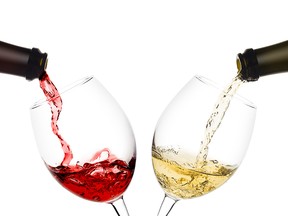
Article content
The next four months are prime time for wine sales. The combination of many heading back to work, the Thanksgiving weekend, the holiday season, and new red wine releases should all jump-start an active buying season. Throw in nearly three years of COVID-19 pandemic struggles and pent-up demand to travel, and get back to normal, and it looks like it is all systems go. Or is it?
Advertisement 2
Article content
As I write this, members of the B.C. General Employees Union have walked off the job, disrupting the delivery of wine, beer and spirit orders across the province, a tactic that has already cancelled shipments to private sector stores and has forced government stores to ration sales.
Article content
Story after story in the wine universe laments the loss of sales to competition from hard seltzers, craft beer, cocktails and the surge in sales of non-alcoholic wines. Everything from health concerns to millennial preferences, a waning baby boomer market, lack of innovation, lack of fun and well, you name it.
Yet no one ever mentions the obvious. Wine at every level has become far too expensive, and when it comes to dining out, wine list prices couldn’t be more of an incentive to stay home.
Advertisement 3
Article content
In a recent wine-searcher.com article, the online global price checker was touting the return of higher prices in Napa. “After a bit of a rough patch over the past two years, prices are back on their traditional upward path.” Globally, the top 10 Cabernets sold at retail started at US$860 per bottle and peaked at a staggering US$5,489. You might think wine at that price doesn’t affect you, but unfortunately, it encourages the rest of the wine world to up their prices, and up they do.
Locally there is no shortage of explanations for higher prices. They range from land prices and labour costs to “our business plan,” the pandemic, a lack of juice, harsh winters, and even blaming imports as heavily subsidized competition. You begin to alienate loyal buyers when bottles jump $3 to $5 to $7 a bottle or more in one year; in restaurants, that increase adds another $10 or $15 to the bill. Wine by the glass is even worse, but you get the sense paying $15 to $20 for a glass of wine is now preferred to paying $75 for an ordinary bottle. Then you are asked to leave a tip of 20 per cent because the people who do the actual work are underpaid.
Advertisement 4
Article content
As one reader ranted to me this week, “I find it increasingly difficult to justify paying more for our wine than our food. I’m also offended by subsidizing diners who don’t drink alcohol. My wife and I used to dine out at least once, often twice or more, per month. Lately, we have sharply reduced that frequency and will likely reduce it further, owing solely to wine’s cost (mark up).”
I assume it won’t be long before this couple joins what is becoming a significant shift to the rest of the drinks market to find something more affordable.
The government’s move to a laughable quasi-wholesale price system has done nothing to improve restaurant prices for consumers. On the contrary, while the monopoly rakes in record profits via its pernicious value-added tax, consumers are faced with less choice and higher prices.
Advertisement 5
Article content
After decades of democratizing wines and inviting the masses to enjoy a wine with dinner, it seems today’s producers, distributors, retailers, and governments are hell-bent on killing the golden goose. Indeed, eating out is no longer a right, but luxury and fine wine is fast becoming the same story. And it is a luxury fewer and fewer people can afford.
Perhaps the best scenario is a return to far fewer wine drinkers. That would precipitate a drop in wine prices and increase the availability of quality wines. For decades we have been saying your best defence against cost and quality is educating yourself. That is more important now than ever.
For our part, we pledge to continue to work to find wines with a high-quality quotient that you can afford and enjoy this fall and winter.
Advertisement 6
Article content
Weekend wine picks
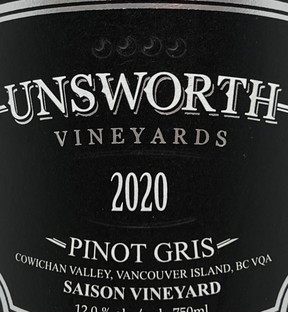
Unsworth Vineyards Pinot Gris Saison Vineyards 2020, Cowichan Valley, Vancouver Island, British Columbia, Canada
$25.90 I 92/100
UPC: 626990320340
Unsworth has worked with Saison Vineyard Pinot Gris since 2010, and its performance has inspired the winery to produce a single vineyard label. We are all the better for it. The Saison effect is its delicacy. It is primarily fermented in stainless steel with a minor amount of neutral French oak (10 per cent) to take on the rush of minerality. The style is electric with a silky leesy undercurrent to keep it running through the palate. A perfectly chiselled clean finish lingers with the scent of the sea. Impressive. Back up the truck if you love real wine.
Advertisement 7
Article content

Blue Mountain Estate Cuvée Chardonnay 2020, Okanagan Falls, Okanagan Valley, British Columbia, Canada
$28.00 I 90/100
UPC: 626452301207
This wine has been a benchmark Okanagan Chardonnay from the beginning. In 2020 the sheer power of the vintage poked out more than usual, and combined with the new oak, it is currently showing off. The palate is all about red/green apples, pineapple, and spicy toasted oak in the finish. However, it is still attractive in many ways and should settle down in the bottle over the next two years. The Estate Chardonnay vines, a mix of clones 76, 95, 96, and 548, are entering their fourth decade in Okanagan Falls. The winemaking is minimal: it is whole-cluster-pressed and fermented on native yeasts in new to three-year-old French oak for six months.
Advertisement 8
Article content
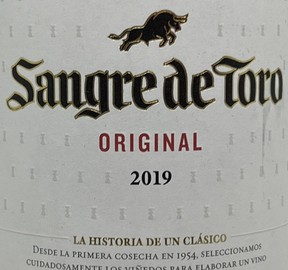
Torres Sangre de Toro Original 2019, Penedès, Cataluña, Spain
$11.99 I 87/100
UPC: 008410113003294
First made in 1954, the ‘Original’ is a dependable budget red with a slightly peppery nose mixed with dried herbs and fresh black cherry, with a touch of curry spice in the finish. The Garnacha Cariñena blend is ready to drink and best served with grilled meats (lamb or pork chops) or a meaty pizza. A well-made everyday red marked down $5 until Sept 3.
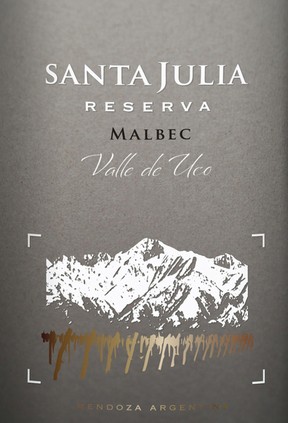
Santa Julia Reserva Malbec 2019, Valle de Uco, Tunuyán, Mendoza, Argentina
$14.99 I 90/100
UPC: 7791728000566
Another high-quality budget wine on sale ($3 off) until Sept. 3 from the Zuccardi family. It’s 100 per cent hand-picked Uco Valley Malbec grown at 1,400 metres above sea level and post ferment. It is aged in concrete, stainless steel and older French oak barrels for 10 months. Fresh and red-fruited, it evokes cherries, plums and blackberries. Even better is the texture and persistence of this wine, something you rarely see at this price level in Canada. Back up the truck, again and again.
Advertisement 9
Article content
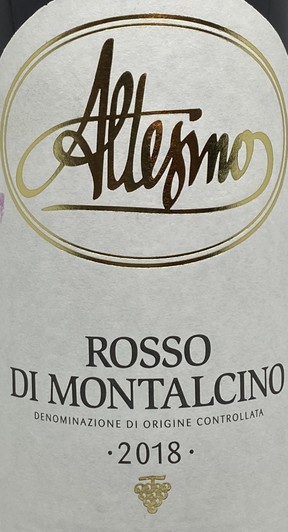
Altesino Rosso di Montalcino 2018, Tuscany, Italy
$29.99 I 91/100
UPC: 662255300337
In the case of the Altesino Rosso, the fruit is all Sangiovese that is only aged for seven months in Slavonian oak barrels, followed by three months in the bottle before heading to market three full years before its big brother Brunello arrives. Bright red, the nose is wild and fresh with earthy scents of wild berries and cedar, and the palate is a mix of ripe plums and dark cherries with bright acidity and tame tannins. Simple but sophisticated is my take, with the always-present elegance of Altesino. A classic Euro luncheon wine that is ready to drink.
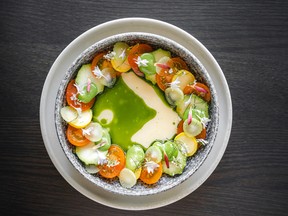
Wine match: Tomato Water Chawanmushi
Created by Executive Chef Gus Stieffenhofer-Brandson of Published On Main (a Vancouver eatery that was named Canada’s Best Restaurant), this recipe sees a classic Japanese steamed custard — called Chawanmushi — given a local twist thanks to B.C. tomatoes. The dish can be served on its own or topped with a variety of additions such as courgette, fava beans, and shaved fennel tops, according to Stieffenhofer-Brandson.
Advertisement 10
Article content
2 cups (500 mL) local Sungold cherry tomatoes, halved
1 cup (200 g) dashi (Japanese soup stock, can find at most grocery stores or use recipe below)
1 1/4 cup (250 g) tomato water
1/4 cup (50 g) mirin
1/3 cup (35 g) shiro dashi
6 eggs
Salt to taste
In a large bowl, crack all four eggs, plus two more egg yolks, and whisk. In a medium-sized pot, bring dashi up to a boil.
Temper the eggs by adding just a little bit of hot dashi at a time, while whisking. Once complete, add in tomato water to the egg mixture and season. Whisk once more.
Equally portion and pour into your desired bowls, leaving enough room for the tomatoes, and steam for about 5 to 8 minutes until it sets with a slight jiggle. Once steamed and set, arrange tomatoes and other desired toppings.
Advertisement 11
Article content
Dress with seasoned tomato water, basil oil (optional), and salt and pepper to taste.
Tomato water
1 kg (2.2 lbs) tomatoes
1 tbsp (20 g) salt
Blend tomato with salt and then hang over cheesecloth overnight with a bowl under to collect the tomato water. Collect, clean, and clear tomato water the next day. The tomato pulp can be repurposed for sauce or tomato jam.
Dashi
8 cups (2 L) water
2-3 pieces kombu (edible kelp)
2 cups (500 mL) loosely packed bonito
Lightly toast kombu over open flame or under a broiler. In a small pot, place kombu in cold water and bring to a boil. Remove from heat and allow to steep for 10 minutes.
Remove kombu, bring back to heat, and then add bonito. Simmer for 5 minutes. Remove from heat, and allow to steep. Strain through a fine mesh sieve, and cool.
Serves 4 to 6.
Recipe match
Tomato Water Chawanmushi is Japanese steamed egg custard, and sparkling sake seemed the way to go; for the less adventurous, there is Prosecco.
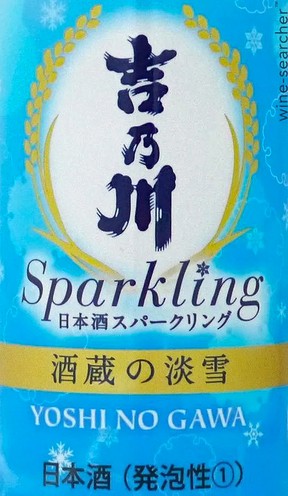
Yoshi No Gawa Sakagura Awayuki Inspiration Sparkling Sake $14.49 (300ml)
Bright, persistent mousse with ripe fruit scents and flavours with a hint of sweetness should be just the right weight for this savoury egg dish.
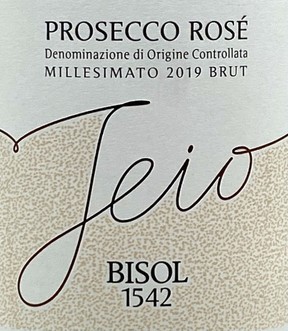
Bisol Jeio Rosé Prosecco Brut 2019, Treviso, Veneto, Italy $24.99
The rosé comes with a light peach hue, raspberry and peach blossoms and a soft, fruity palate balanced by a fresh finish.
Source: vancouversun.com


